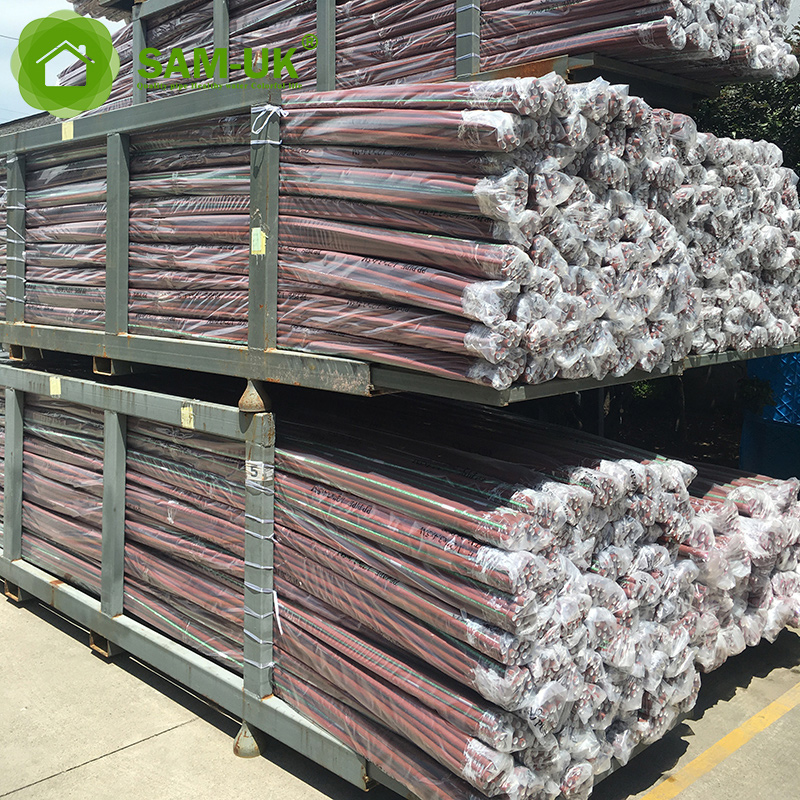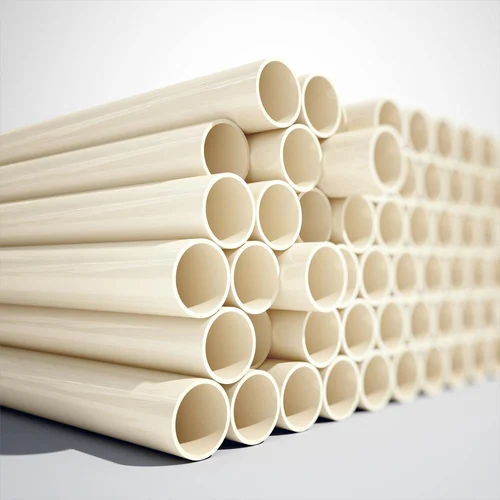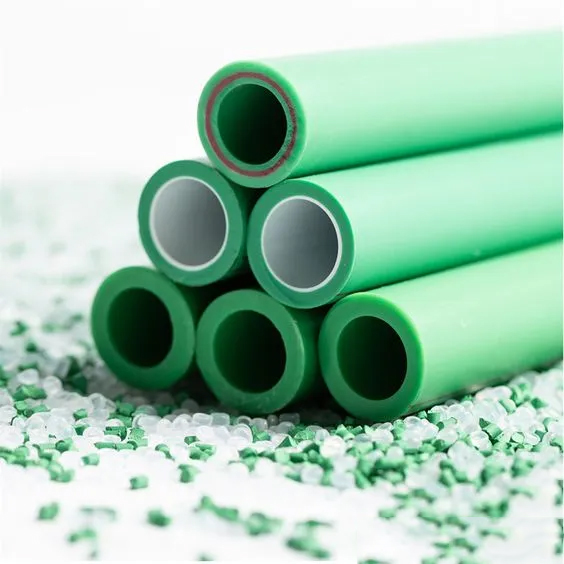Article Introduction
Pipe fittings, also known as pipe connectors, attach one pipe to another in order to lengthen the run or change the flow direction in a plumbing system. These are used to combine, divert or reduce the flow of the water supply, and they come in a variety of sizes to fit the pipe they will connect.
Pipe fittings’ dimensions are important, and there are sizing standards to follow. While most have openings of the same size on each end, some fittings are designed with different-sized openings and serve as the transition from one size pipe to another.
Types of pipe and their purposes
PVC: PVC (Polyvinyl Chloride) pipe is one of the most widely used piping materials in construction and plumbing due to its durability, cost-effectiveness, and versatility. It’s lightweight, resistant to corrosion, and designed to handle various applications, including:
- Water supply lines
- Drainage systems
- Irrigation
- Electrical conduit

CPVC: CPVC (Chlorinated Polyvinyl Chloride) pipe is a durable and heat-resistant alternative to standard PVC. It’s specially designed to handle higher temperatures, making it an ideal choice for:
- Hot and cold water distribution
- Industrial fluid handling
- Chemical processing

PPR: PPR (Polypropylene Random Copolymer) pipes are highly reliable and widely used for hot and cold water supply systems. Known for their durability and resistance to pressure, PPR pipes offer excellent performance in:
- Plumbing systems for hot and cold water
- Heating systems
- Water purification systems
- Chemical transportation

PE: PE (Polyethylene) pipe is a versatile, flexible, and durable piping solution commonly used for a wide range of applications. Its high resistance to pressure and environmental stress makes it ideal for:
- Water supply systems
- Gas distribution
- Irrigation systems
- Sewage and drainage systems

Types of pipe fittings and their purposes
1. Tee, Wye, Cross and Elbow Fittings
Tee and wye Fittings – Tees and wyes are used to connect three pieces of pipe. Tees can have one inlet and two outlets at 90-degree angles in the shape of a “T” and are used to split a supply line, or they can combine two lines into one outlet. You often see tee fittings connected to potable water supply lines. A wye is shaped like a “Y” with the two inlets coming together at roughly 45 degrees into a single outlet in drain applications. Sanitary wyes allow wastewater to enter a drain pipe from the side, while the second part of the “Y” aligns with the pipe to allow sewer gases to vent upward.

Cross Fittings – Crosses have four openings for pipes – one inlet and three outlets, or three inlets and one outlet, depending on the need. These four-way fittings are less common and used in some irrigation and sprinkler applications.

Elbow Fittings – Elbows change the direction of flow between two pipes. Common elbows have 90-, 60-, 45- and 22 1/2-degree bends and are used to make a turn. They can be joined together to move around obstructions in the pipe run.

2. Coupling, Adapter ,Bushing and Union Fittings
Coupling and Adapter Fittings – Pipe couplers slip over the outside of two pipes to connect them, usually permanently. A coupling can be a reducer, or reducing coupling, meaning they reduce flow by joining a larger pipe to a smaller size. Adapters are used when connecting two pipes of different types. For example, an adapter could be fitted on the end of a plain pipe to allow a threaded connection at the other side of the adapter.

Bushing Fittings – Bushings, sometimes called reducer bushings, are used for connecting two pipes of different sizes. The larger diameter of the bushing fits inside of the larger pipe. The smaller pipe is then inserted into the smaller end of the bushing.

Union Fittings – A union is a threaded fitting which allows the pipe work to be separated and reconnected without any horizontal movement in the pipe. It can be a standalone pipe fitting connecting two pieces of pipe, or an integral part of another fitting (such as a ball valve) which allows it to be separated.

3. Cap, Plug and Nipple Fittings
Cap Fittings – A cap fits over the end of a pipe to stop the flow of water or gas. These fittings can be used for the permanent termination point of a pipe, or used temporarily to cut off supply during a plumbing project.

Plug Fittings – Plugs used at the end of a pipe to seal the opening, similar to a cap. The difference is that a plug fits into the threaded pipe opening to make the seal, while caps fit over the opening. They are commonly found at cleanout locations for sewer systems.

Nipple Fittings – Nipples are short sections of pipe that are male-threaded at each end and used for connecting two female-threaded pipe ends or fittings.

Connection Methods
Pipe joints can be secured in a number of ways, depending on the material, features and functions of the pipes and the fittings being used. Connection methods include:Push to connect fittings(sometimes called push-to-fit or click-to-connect): These fittings make installation quick and easy for DIY plumbing projects. They have a special O-ring and metal teeth inside to grip and get a watertight connection in low-pressure situations. They can be used in certain situations with PEX, PVC and copper pipe.
- Threaded Fittings: Threaded pipe fittings can be twisted together for a tight fit. Pipes and fittings that are female threaded have threading on the inside of the fitting and fit around male connections, which have thread on the outside. Considering a bottle with a twist-off lid, the bottle has male threads and the lid is female.

- Sweat Fittings: Permanent, leak-free pipe joints are made when solder is melted, or “sweated,” around the seam of brass or copper fittings and pipes.

- Slip Fittings: Plastic pipes and fittings with smooth walls that can easily slip together are affixed using a primer and quick-drying solvent cemen.

- Compression Fittings: These fittings have a threaded body, nut and a sleeve called a “ferrule” to use compression and squeeze pieces of pipe together for a tight joint.

- Flare Fittings: Used for high water pressure and gas applications, a flare nut and the cone-shaped fitting connect the pipe and fitting after the pipe has been “flared” with a special tool.

- Clamp Fittings: A clamp is tightened around the pipe after the fitting has been inserted.

- Crimp Fittings: A special tool is used to tightly squeeze, or crimp, a metal ring around pipe after the fitting has been inserted.

Types of Pipe Fitting Material
Different types of plumbing fittings come in the same material as their pipe counterparts, whether CPVC, brass or galvanized. In general, use PVC FITTINGS for PVC pipe, COPPER FITTINGS for copper pipe and so on.
There are some exceptions and items to note:
- PEX FITTINGS can be found made with either metal or plastic and are used for PEX pipes.
- Some types of pipe fittings are designed to transition a pipe of one material to a pipe made from another material.
Tip: PVC should be used only for cold water applications because high temperatures can cause it to warp.
Conclusion
This guide describes pipe fittings used for plumbing systems, and types of pipe fittings. Obviously, pipe fittings are attached to the end of pipes that allow them to change direction, control the flow, and change the diameter of the pipe. Being a non-trivial part of plumbing and piping systems, consulting us with your need is definitely advised to save yourself time, money, materials, and headaches. When you shop at SAM-UK for your pipe and fitting needs, you’re getting the brand names you know and trust.
About SAM-UK
SAM-UK are a professional 18+ years manufacturer in producing vinyl building profile products and PVC , CPVC , PPH , PPR , PP pipes and pipe fittings, valves, taps and so on. We own the certificates of SGS\SONCAP\ISO9001\CE\NSF,support color /size customization. Welcome to consult for Catalog and Product. you can contact us at email [email protected]











